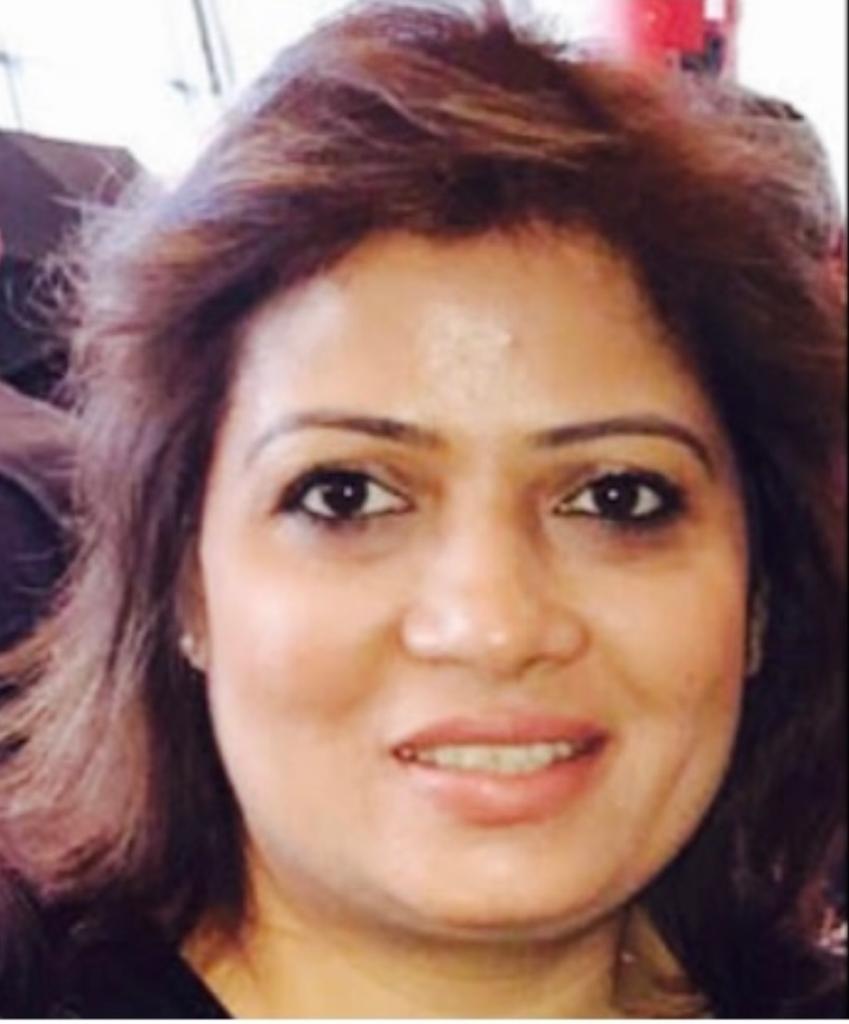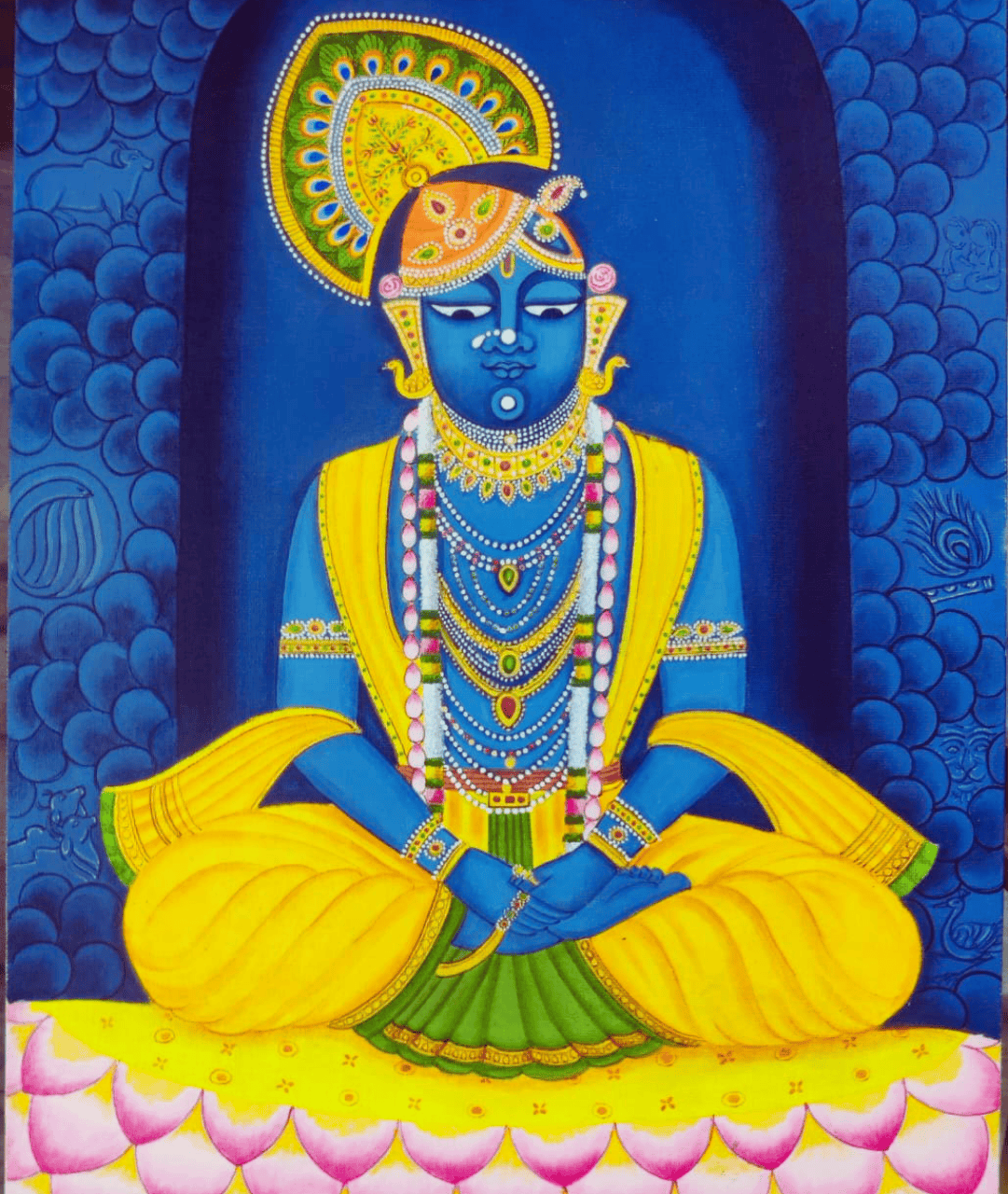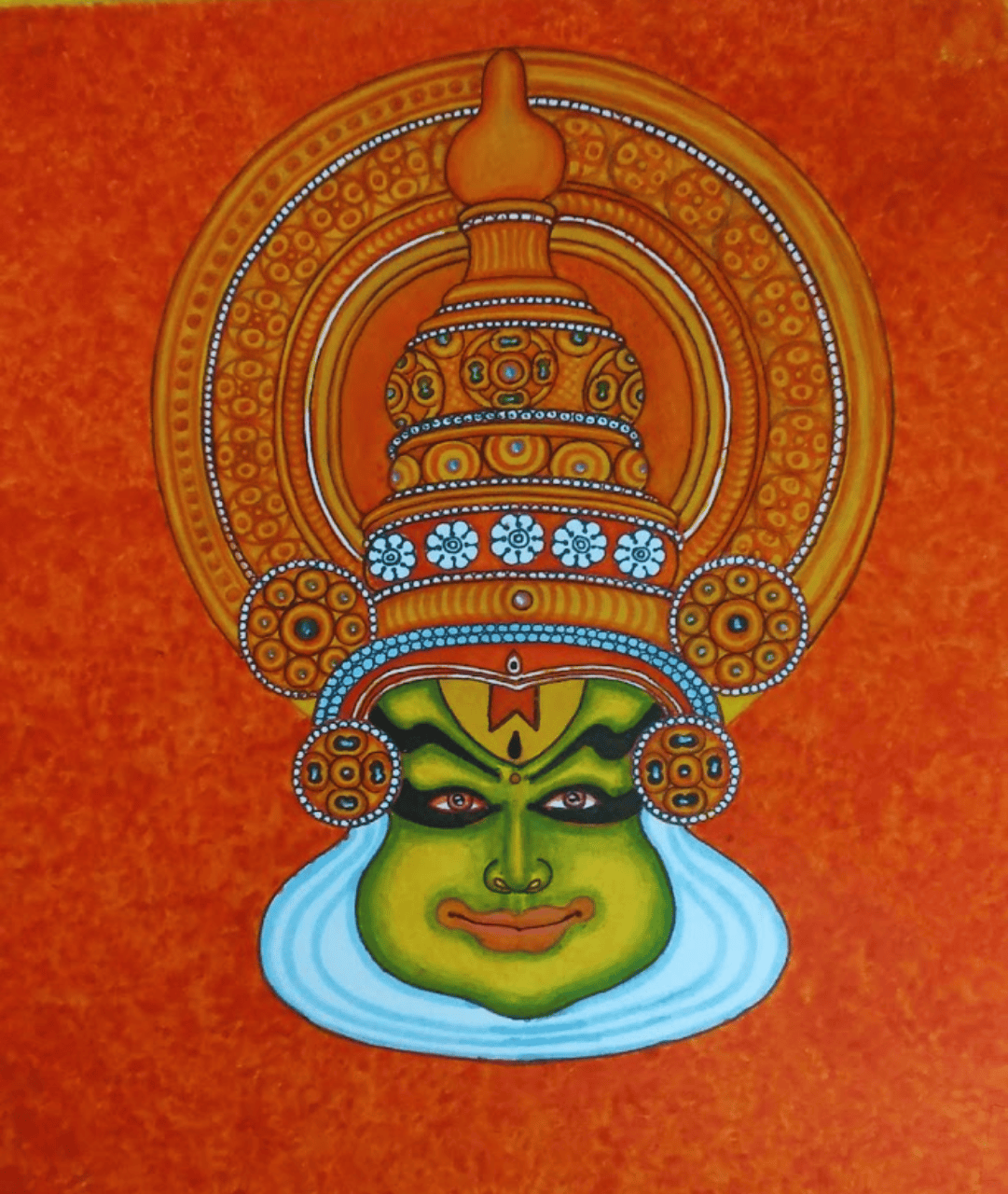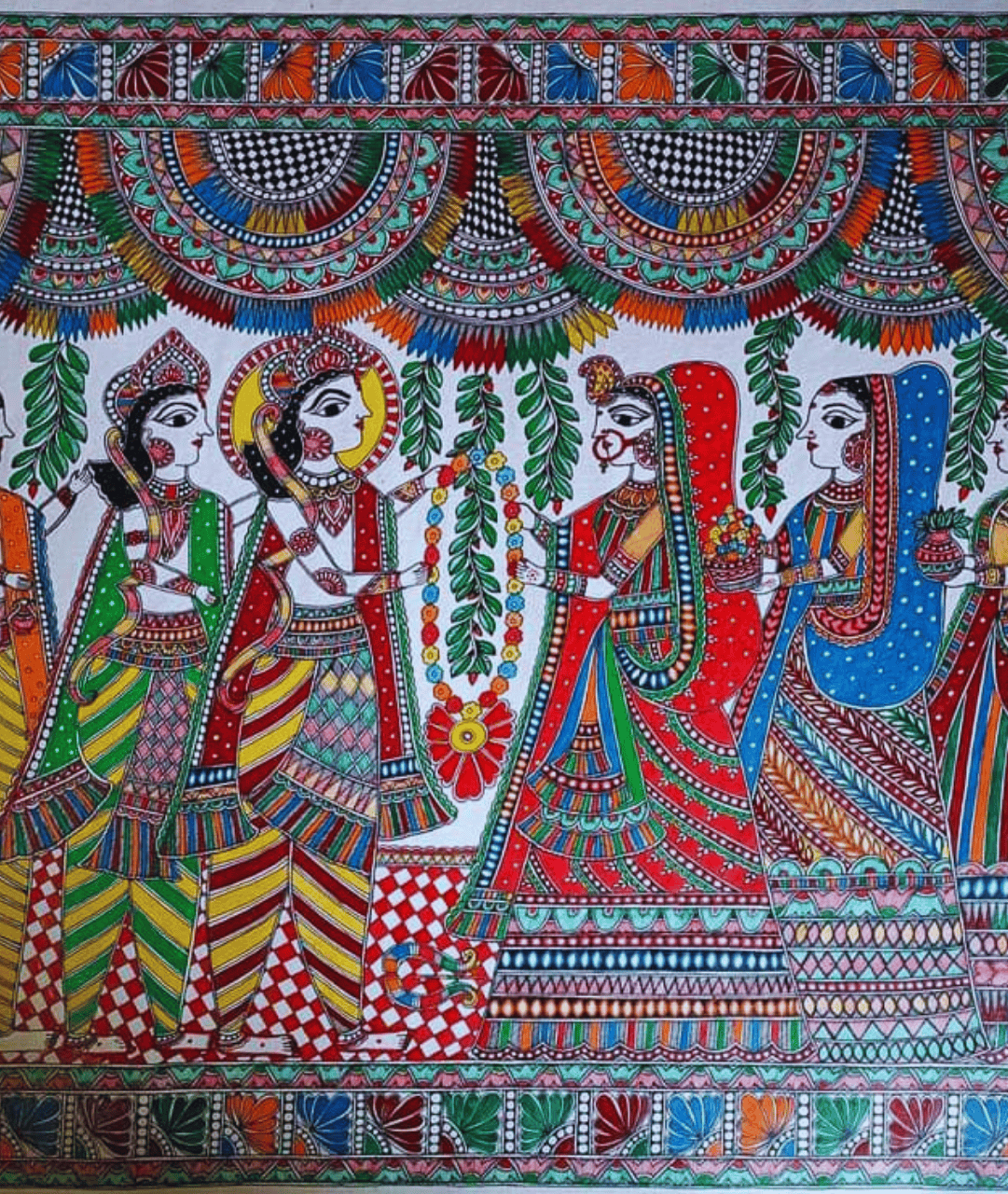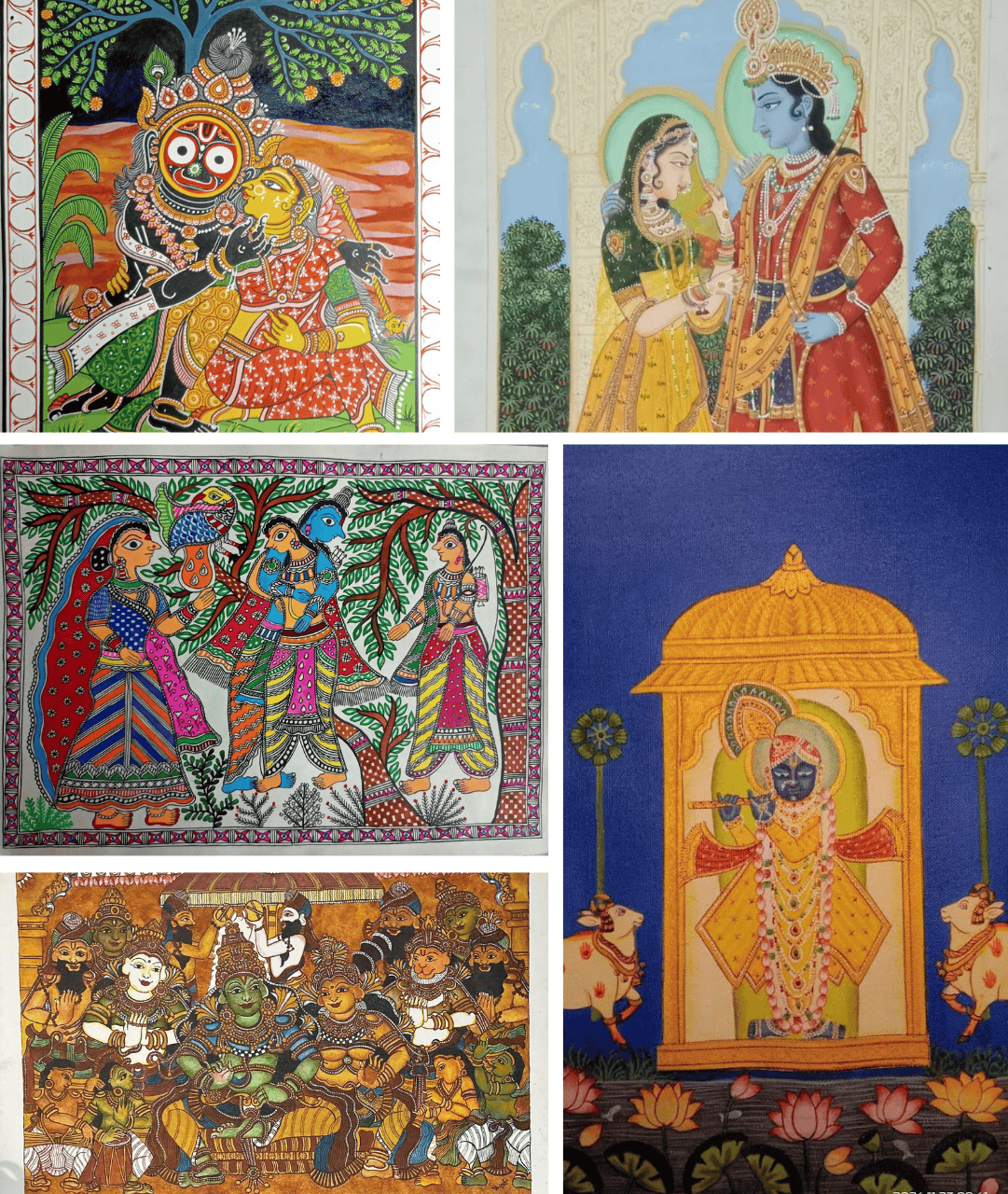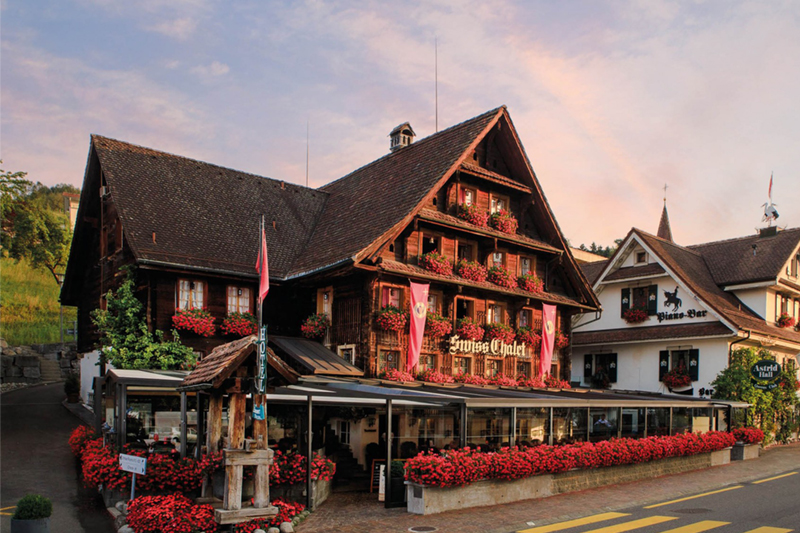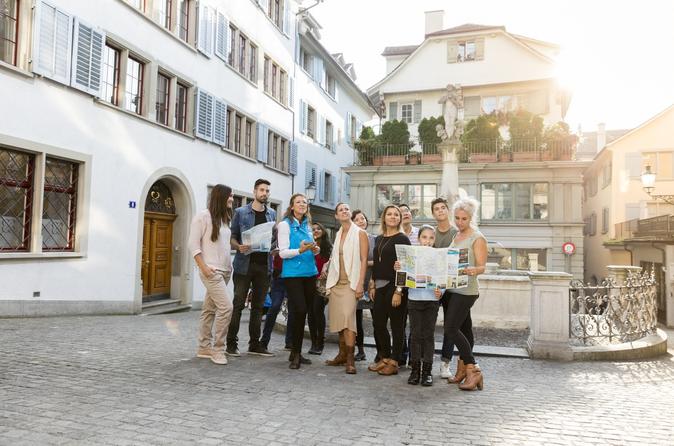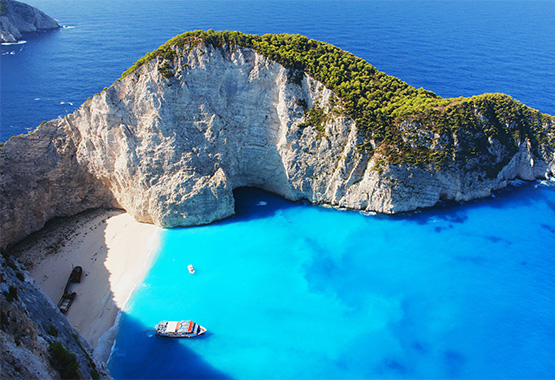Fish Wedding is a popular theme in Santhal art. Fish are considered auspicious by the Santhal tribe. When portraying this theme, two fish are depicted as bride and groom on palanquins. The entire aquatic community comes together to celebrate this union with music, dance and a feast. The colourful figures are static, frequently multicolor; they are more artistic than realistic depictions.
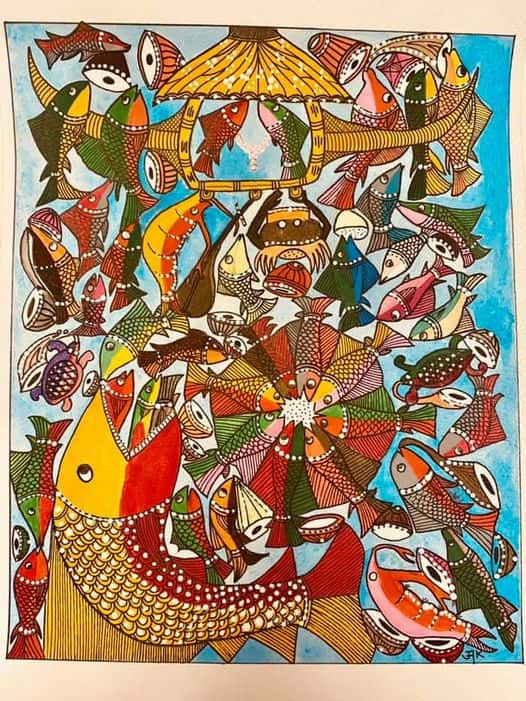
This is my rendition of Fish Wedding in watercolour and ink as part of my online Santhal workshop taught by Catterfly’s traditional artist Samir Chitrakar.
Santhal Painting is an ancient art of India. Santhal tribe is the third largest in India. The paintings are drawn by a special set of people called ‘jadu patuas’ or magic painters who come from the Santhal Paragana district of Bengal/Bihar and from areas in and around Odisha, Bihar, Jharkhand and Assam. The Santhals prefer to relax in the evenings with music and dance in a beautiful close-knit community setting. Popular themes for painting on ‘pata’ or cloth include village folk working in the fields, harvesting, dancing and singing under trees.
Also, popular are paintings depicting wedding scenes, praying at temples, village feasts, playing of traditional musical instruments, fishing, boat rides, carrying firewood and water pots, flying kites, and a bullock cart ride to the market. Santhals traditionally use natural colours made from leaves, flowers, stones, minerals and grains. They have 10 basic colors and the rest are prepared by mixing these as per need.
Jadu patuas are supposed to work magic because their paintings are believed to preserve crops, avert diseases, honour the dead and so on. At the start of ‘Pitru paksha’ (period when Hindus pay homage to ancestors through offerings), as we all remember our ancestors I wanted to share about the jadu patua practice of ‘Chakshudaan pata’.
This is a painting made for a bereaving family and is shrouded in magic and mysticism. When someone dies in a village, the magic painter visits the family with an image representing the deceased. The image would not have pupils in the eyes. After the family makes a gift offering or daan to the jadu patua, he performs the ‘Chakshudaan’ or bestowal of sight by completing the eyes of the portrait in order to free the dead person’s soul and enable its ascension to heaven. What a beautiful way to remember our forefathers and to support the artist community!
These paintings are a class apart and have predated the Kalighat school of paintings; which was born in the market places of Kolkata during the 19th century. It is said that Kalighat paintings originated in the vicinity of the Kalighat Kali Temple in Kolkata and hence the name.
References: Catterfly.Travel.Art.Culture











